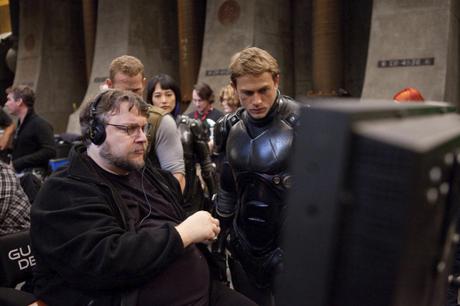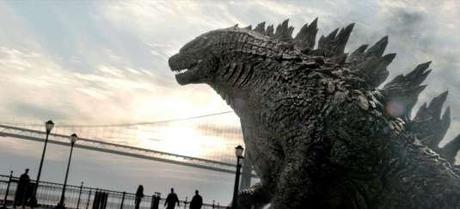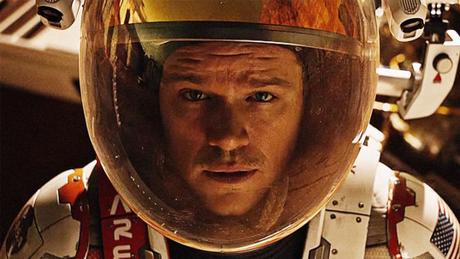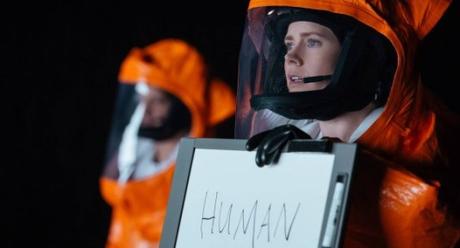 Carmen (Macarena Garcia), the lady bullfighter, in Pablo Berger’s Blancanieves
Carmen (Macarena Garcia), the lady bullfighter, in Pablo Berger’s BlancanievesI know what you’re thinking: “Oh, boy, here comes another of those ‘Best of the Year’ surveys!” Well, not exactly. My thoughts in compiling this list are more in line with taking an off-center approach to a much abused topic.
By that, I mean to jot down my impressions, good, bad or indifferent, of films I happened to have enjoyed (or not) in the venues in which they were originally shown: the movie theater.
As readers of my blog are aware, movies have been a major preoccupation of mine for a number of years. And since nowadays most films can be viewed online or in one’s home on a variety of platforms, I decided to give equal time to works that merit the wide-screen approach. That’s the way these films were meant to be seen — and that’s how I saw them.
Another reason I decided to make this list was simple: due to time constraints, I have been unable to write a longer analysis. I do hope to remedy this situation in the near future. Indeed, many of these works require, no, DEMAND, a full-length commentary on their own. For now, I believe this year-end wrap-up will serve the purpose.
The films are in chronological order by year. Happy 2018 everybody!

Blancanieves (2012)
A Spanish gothic adaptation of Snow White, with hints of magical realism and the Grand Guignol, Blancanieves took me and everyone who watched it by total surprise and sheer delight. Much as I experienced with Tim Burton’s Charlie and the Chocolate Factory when I first saw it in 2005, I found myself smiling all the way through while viewing this fabulous feature at the North Carolina Museum of Art — a most appropriate site for this work. For indeed, this is a definitive example of film art, a pièce de résistance and labor of love for Spanish writer-director Pablo Berger and his cast and crew. The wind was nearly taken out his sails, however, when Señor Berger was informed that his silent-film project would be overshadowed by Michel Hazanavicius’ The Artist (2011), which beat him to the punch by almost a year. Seen on its own terms, Blancanieves is the more challenging one for audiences unfamiliar with Spanish culture. Filmed in glorious black and white by cinematographer Kiko de la Rica, with an unforgettably haunting music score by Alfonso de Vilallonga, the plot takes a few liberties with the accustomed “happy ending” of most fairy tales, much to the film’s betterment. Set in and around Seville, Spain in the early 1920s — in particular, the bullfighting arena (with emphasis on Spanish artist Francisco Goya’s 18th-century Tauromaquia prints) — this revisionist retelling of Snow White (or “Blancanieves” in Spanish) tells the tale of little Carmen (Sofía Oria and, as the young adult Carmen, Macarena García), the orphaned daughter of a once famous matador (Daniel Giménez Cacho). Through various plot contrivances and twists of fate, Carmen finds herself in the care of a troupe of wandering circus dwarfs, garnering fame through her travels as a female bullfighter. Of course, there’s a wicked stepmother, Encarna (played with lip-smacking glee by Maribel Verdú), and a perfidious henchman who doubles as her chauffeur (Pedro Ponce). Told through purely visual and musical terms, the film pays homage to Tod Browning’s Freaks, with references to the silent-film oeuvre of Abel Gance (Napoleon, Le Roue) and Carl Theodor Dreyer, especially The Passion of Joan of Arc in Berger’s close-ups of the bizarre and the grotesque. The purposely ambiguous ending will have you scratching your head for days, but if you are attuned to the director’s vision it should satisfy the insatiable critic in all of us.

Pacific Rim (2013)
Pacific Rim, Mexican-born director-writer-producer Guillermo del Toro’s big-budget foray into the apocalyptic, end-of-the-world genre, has some captivating character studies, specifically the interactions between our hero, Raleigh Becket (British actor Charlie Hunnam), his literal sidekick Mako Mori (Japanese actress Rinko Kikuchi), and the straight-talking General Stacker (tough-as-nails Idris Elba), their mentor and savior. If the ravings of Godzilla and King Kong are the ultimate in prototypical movie monsters that love to level major cities around the hemisphere, then the fantastic beasts of Pacific Rim will likely tickle your fancy. If not, then look elsewhere, for Pacific Rim came out at time when a spate of dystopian pictures from World War Z, Oblivion, Battle: Los Angeles, The Avengers, and Edge of Tomorrow dominated the movie-going landscape. The gigantic sea monsters known as Kaijiu are indeed impressive, as is the interplay between secondary characters Dr. Newt Geiszler (a manic Charlie Day), the resentful Dr. Gottlieb (Burn Gorman), and black marketeer Hannibal Chau (the ever-reliable Ron Perlman, a Del Toro stalwart, in search of his missing shoe). In addition to which, the Jaegers, those humongous robotic machines built to combat the rampaging Kaijiu, are individually differentiated, if given less screen time than one would have liked. The story, however, has a “been there, seen that” aspect to it, with an ending that can be telescoped a mile away. Still, Del Toro’s affection for those monstrous adversaries is never in doubt, despite his characters’ penchant for indulging in stereotypical screen behavior, i.e., macho posturing. With that said, Charlie Hunnam has become (or tried to become) the Heath Ledger of his day. The walk, the talk, attitude, the look, and feel of the late Australian-born Ledger are certainly “there” in spirit. What’s missing, at least from this angle, is Ledger’s obsession with establishing a real onscreen persona, quirky as many of them were. One a side note, the film’s score was composed by Ramin Djawadi, noted for his musical contributions to the popular Game of Thrones series on HBO, along with the cable channel’s Westworld.

Godzilla (2014)
The big, bad Japanese gorgon is back! He’s filled out somewhat, and that midriff has gotten a shade heftier with “age.” But he’s as fire-breathing mean as the old boy has always been. A fairly winning reboot of the old Toho Studios franchise (despite the cheesiness of their later product), this latest reincarnation of Godzilla, King of the Monsters (originally titled Gojira in 1954, and retro-fitted in 1956 with scenes in American English starring Raymond Burr) holds up fairly well against the competition. Directed by British-born Gareth Edwards (Monsters, Rogue One: A Star Wars Story), the plot of this newest exercise in urban bashing extends the chaos to San Francisco, where U.S. Navy officer Ford Brody (Aaron Taylor-Johnson) wages a one-man battle to save the city not only from Godzilla’s atomic-age belches but from some Rodan-like pterosaurs called “MUTOS.” The film starts off well, with a genuine air of mystery about it. For one, we learn the reason for those atomic bomb tests in the forties and fifties was to combat Godzilla’s growing menace. For another, the menace was never extinguished. Yikes! As Ford’s scientist father Joe Brody, Bryan Cranston (Breaking Bad) acts rings around the other players. The intensity of his performance alone is what makes the first 20 minutes of the film so absorbing. The stunt guys in the monster suits are believable enough as well, with some elaborate set pieces (i.e., Godzilla’s first entrance, the destruction and mayhem surrounding San Francisco Bay and the Golden Gate Bridge) earning kudos for realism and seamless integration into the whole. However, some of the main characters undergo little development. For instance, Dr. Serizawa (Ken Watanabe), who served an essential function in the original Godzilla, can only stare blankly at the ensuing carnage. He’s there as a cynical nod to the Asian market. A pity! The same goes for his assistant Dr. Graham, the usually capable Sally Hawkins, left to mutter pseudo-scientific bromides while the single-minded Admiral Stenz (David Strathairn, wasted) ignores her and Serizawa’s warnings about the implementation of atomic weapons against the beasts. As you may have gathered, there are more than enough similarities between this picture and Pacific Rim (reviewed above) to warrant copyright infringement. We won’t go into that (and neither did the producers). Let’s say that when the focus is on the almighty Godzilla’s battles with the voracious MUTOS, all is well. There’s a side-story, too, about Ford’s wife (Elizabeth Olsen), a nurse at San Francisco General Hospital, and his little son, juxtaposed against the opening sequence involving the loss of Joe Brody’s wife Sandra (Juliette Binoche). Beyond that, you may enjoy this FX exercise in technological gobbledygook.

The Martian (2015)
A middle-of-the-road, sci-fi adventure flick from director-producer Ridley Scott, with a screenplay by Drew Goddard, The Martian is about survival of the smartest and how a daily routine can keep you firmly grounded, even on as desolate a setting as Mars. Based on writer and ex-computer programmer Andrew Weir’s 2011 novel of the same name, the film focuses on space explorer Mark Watney (Matt Damon), accidentally abandoned on red planet Mars by his fellow crewmates. A botanist by profession, Watney uses what knowledge he has of the field as a way to increase his chances for survival, while hoping against hope that his crewmates will be able to rescue him before water, food, and oxygen give out. Meanwhile back on Earth, politics and monied business interests are at play, as well as concern for the rescue crew’s safety. Eventually, international cooperation and humanitarian needs take precedent in this ultimately engrossing drama. You will be surprised to learn that there are no bug-eyed monsters in outer space (at least, not in this reality-based depiction), nor are there villainous saboteurs lurking behind the scenes. Just your normal, everyday human beings caught up in the business of rescuing a fellow space traveler from disaster, amid hyperbolic discussions about whether a single, supposedly expendable life is truly worth saving. The film shares a similar storyline with Ron Howard’s Apollo 13 (1995). There are also many fine performances, chief among them by Damon as the titular “Martian,” whose ingenuity and instincts for self-preservation are stressed almost to the breaking point. Too, there’s a war of wills between NASA director Teddy Sanders (an implacable Jeff Daniels) and mission director Mitch Henderson (one-track-minded Sean Bean), in addition to numerous character vignettes by Jessica Chastain as Commander Melissa Lewis, Kristen Wiig as NASA media director Annie Montrose, Chiwetel Ejiofor as Mars mission director Vincent Kapoor, Benedict Wong as director of the jet propulsion lab Bruce Ng, and Michael Peña as jocular mission pilot Rick Martinez. While botanist Watney is steadfast all the way through his ordeal, he does manage to lose his composure once he realizes the odds are stacked against his success. His solution to preserving his sanity (and his humanity) is in recording his feelings, hopes, struggles, and aspirations in video form. Of course, with such a big budget as $108 million at risk, director Scott could not afford to let his hero perish. This gives the movie an atmosphere of inevitability and, if you will, futility. We know that Watney will be rescued in the end; that all will be well and the world will be made whole again. Still, despite the obviousness of the film’s chosen direction, my favorite sequence, implausible as it may seem, occurs towards the end of this harrowing sci-fi production. Sitting alone on a campus bench, Watney wordlessly contemplates his past exploits before stepping into the lecture hall. The survivor of a mind-boggling ordeal, he is now a survival instructor, about to teach a class of astronaut recruits the dirty business of survival. When practically all of his recruits raise their hands with questions, I wanted to raise my hand, too. Perhaps a sequel will come out of this lone and uniquely satisfying episode.

Arrival (2016)
If you knew what the rest of your life would be like before anyone else did; if you had insight into your loved ones’ future prospects and, knowing what you knew, would you change anything about the outcome — or want to? These are the underlying themes of French-Canadian director Denis Villeneuve’s Arrival, his low-key answer to present-day, slam-bang science fiction. Based on writer Ted Chiang’s 1998 “The Story of Your Life,” taken from his larger collection, Stories of Your Life and Others, the screenplay by Eric Heisserer takes a tried-and-true formula — the presence on Earth of beings from another planet shake up man’s preconceived notions of superiority — and overlays it with both an intellectual and profoundly emotive core. The story is a simple one, though less straightforward than one would expect: Earth is invaded by twelve enigmatic, stone-shaped spacecraft which harbor seven-armed, octopus-like creatures the scientists have dubbed “heptapods.” Unable to converse with the aliens by ordinary means, the U.S. military, headed by Colonel Weber (Forest Whitaker), along with its counterparts in eleven other nations, enlists the aid of linguistic expert Louise Banks (Amy Adams) and theoretical physicist Ian Donnelly (Jeremy Remmer) in an effort to comprehend the motives behind the visitation. The immediate by-product is skepticism on the military’s part. However, by dint of a series of hours-long learning sessions, Louise mounts a heroic effort at personal outreach. Soon, she is able to communicate with two of the aliens (whom she nicknames “Abbott” and “Costello”) via their pictographic non-linear language. Amy Adams’ shining portrayal of linguist Louise is a joy to behold. Her emotional catharsis throughout her journey helps the viewer comprehend the pain of suffering of one’s life in ways that only become clear later on. Beautifully crafted and excellently acted, the film revels in a newfound appreciation for mutual cooperation between the sciences and language arts. It’s the triumph of reason, introspection, and empathy over force and armed might; of understanding the “other” through communication and language (“the foundation of civilization,” as Louise describes it), and of learning to view the passage of “time” in a totally different light. Archways, doorways, ceilings, and textures (as well as strategically placed “flashbacks”) provide visual clues to the story’s definitive conclusion. Jóhann Jóhansson is credited with the percussive sound-scape. But the film is bookended by the superb use of Max Richter’s “On the Nature of Daylight” for string quartet, an oft-employed piece found in several recent features, among them at the end credits of Martin Scorsese’s Shutter Island, where it is paired with a Dinah Washington song.
End of Part One
(To be continued….)
Copyright © 2018 by Josmar F. Lopes
Advertisements &b; &b;
